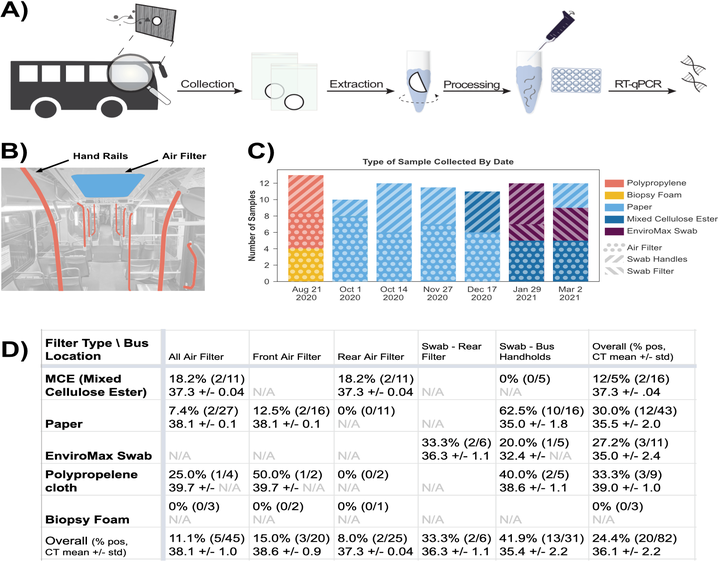 Passive sensor fabric placed in public transit HVAC systems may enable cheaper monitoring of pandemic outbreaks in the future. Image credit: the study authors
Passive sensor fabric placed in public transit HVAC systems may enable cheaper monitoring of pandemic outbreaks in the future. Image credit: the study authorsAbstract
Affordably tracking the transmission of respiratory infectious diseases in urban transport infrastructures can inform individuals about potential exposure to diseases and guide public policymakers to prepare timely responses based on geographical transmission in different areas in the city. Towards that end, we designed and tested a method to detect SARS-CoV-2 RNA in the air filters of public buses, revealing that air filters could be used as passive fabric sensors for the detection of viral presence. We placed and retrieved filters in the existing HVAC systems of public buses to test for the presence of trapped SARS-CoV-2 RNA using phenol-chloroform extraction and RT-qPCR. SARS-CoV-2 RNA was detected in 14% (5/37) of public bus filters tested in Seattle, Washington, from August 2020 to March 2021. These results indicate that this sensing system is feasible and that, if scaled, this method could provide a unique lens into the geographically relevant transmission of SARS-CoV-2 through public transit rider vectors, pooling samples of riders over time in a passive manner without installing any additional systems on transit vehicles.